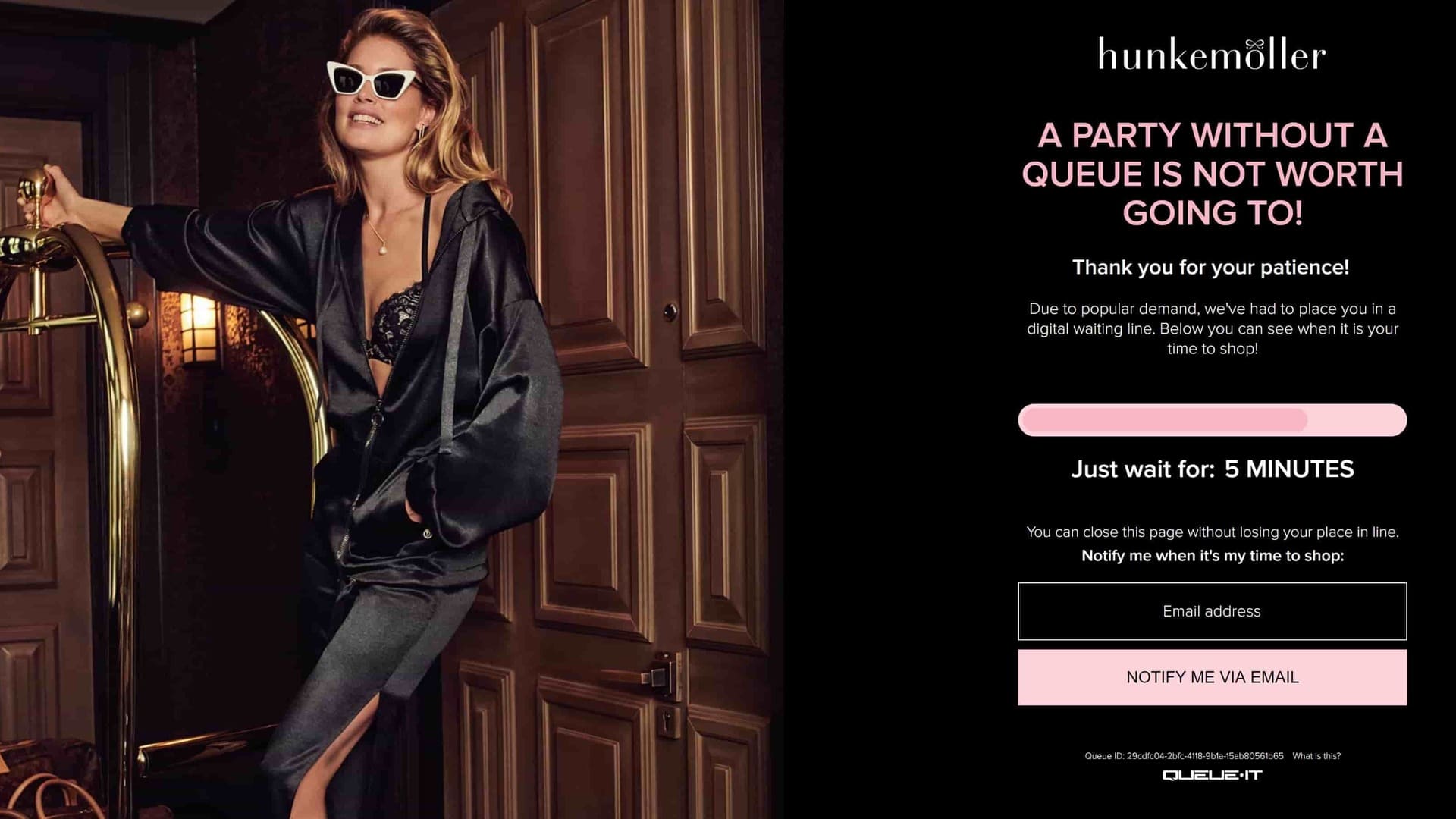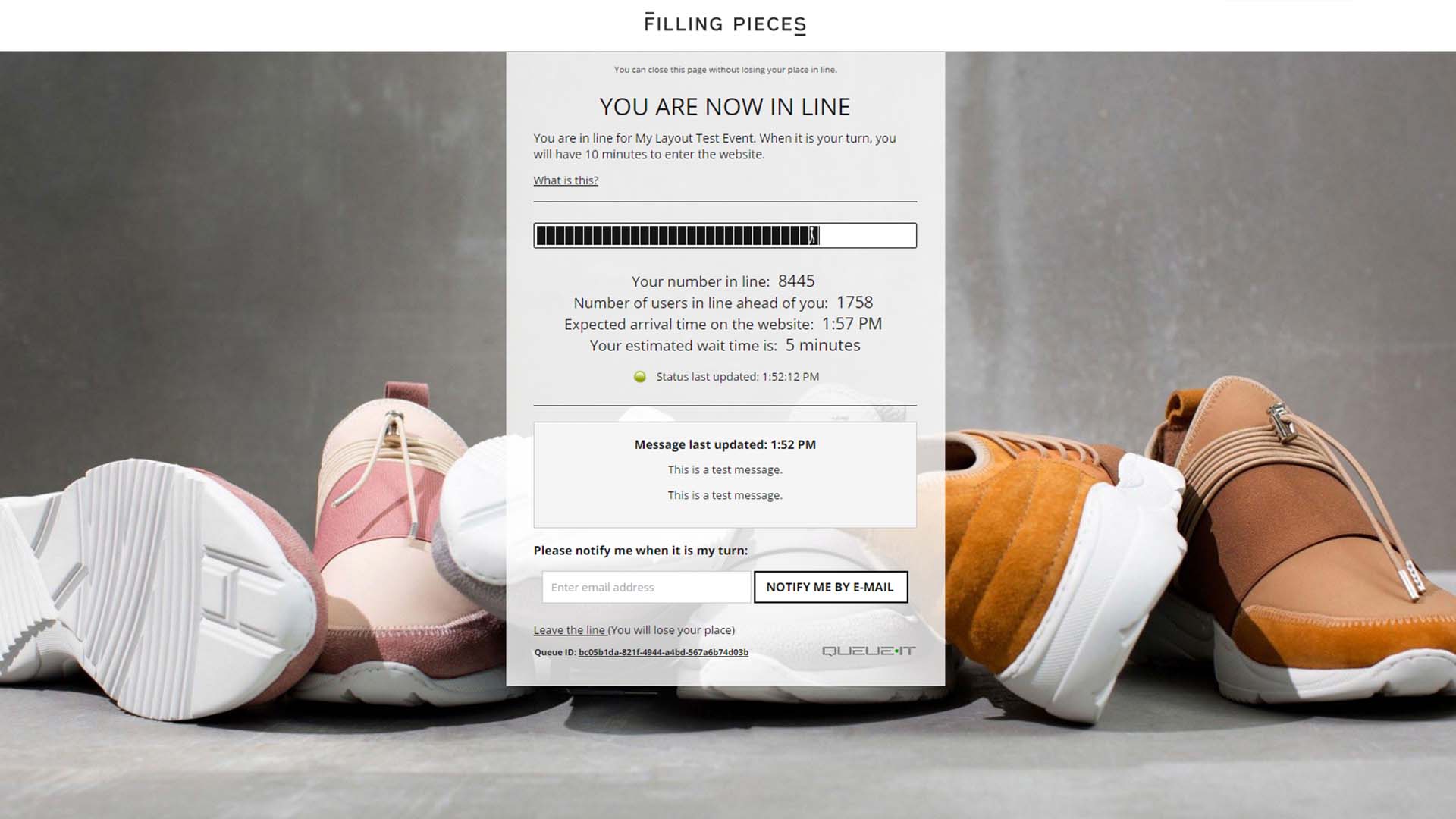Why smart marketers are putting their shoppers in an online queue

There's nothing worse than a crashed website. Discover the powerful reasons behind why smart marketers are putting their online shoppers in a queue.
“Put online shoppers in a queue? Are you crazy?”
We heard this a lot back in 2010 when we first founded Queue-it.
Thankfully (for us), the smart marketers of today understand not only the necessity of online queues, but also their value in driving hype, boosting conversions, and increasing purchase intent by tapping into social proof.
Lines in brick-and-mortar stores are an essential and fair way of dealing with the flow of customers. And they serve the same purpose online.
Ideally, all websites could scale infinitely and on demand, accommodating whatever traffic the internet throws their way. But the reality is not so simple.
A brief scan of the news headlines shows that the websites of one online retailer after another continue to crash because of traffic surges. It’s estimated that J. Crew lost over $700,000 in orders alone during their downtime on 2018’s Black Friday. Even the biggest players like Walmart and Amazon are liable to fail when faced with overwhelming traffic, with losses running well into the millions of dollars.
Free Download: How to Choose a Virtual Waiting Room
Marketing campaigns and ad spend go to waste when websites go down. And lost orders during websites or app crashes represent only a fraction of the holistic cost of downtime, when you consider harmed brand reputation and SEO setbacks.
So, why are smart marketers using an online queue? There are several answers, but there’s no doubt about it—the fundamental reason is:
A crashed website where no visitors can shop is far worse than a queued website where some visitors can shop.
Of course, there are many ways to build performance into your website to improve its ability to cope with high traffic (though beware of these 5 popular misconceptions).
But we’re here to answer why smart marketers put their customers in an online queue. The obvious answer is the same for why ecommerce managers or IT directors do: Keeping the website available and responsive.
Beyond this crucial benefit, an online queue offers marketers some key strategic advantages:
First among them, online queues generate hype by tying in to a central aspect of marketing: social proof.
Psychology tells us humans are very influenced by what others think and do. We look to what others do to guide our behavior.
You’ve assuredly experienced this in your own life. Imagine walking by two bakeries. One has a line out the door, the other has no one inside. So long as you weren’t in a rush, which one would you choose?
The presence of a line actually makes that bakery more appealing.
In the wisdom of the crowd form of social proof, seeing large groups of other people endorsing a product—in this case, evidenced by them standing in line—encourages others to join in. This decision-making snowballs into the bandwagon effect. The increasing popularity of a product encourages even more shoppers to get on the bandwagon.

Free Download:
Best Practices Guide for Queue-it's Virtual Waiting Room
Consider another brilliant use of social proof that got across the idea of overwhelming demand. Infomercial writer Colleen Szot was drafting the copy for an ad for NordicTrack equipment. She decided to replace the typical call-to-action of “Operators are standing by” with “If operators are busy, please call again”.
The exercise machine became one of the best-selling infomercial products of all time.
Again, by eliciting the thought of a queue of eager callers, a poorer customer experience—being met with a busy signal instead of connecting to an operator—became an asset in selling the product.
An online queue taps into social proof in a way that a static “sorry, we’re overwhelmed right now” page can’t. Besides a dynamic progress bar, the online queue can show shoppers their place in line and how many people are ahead of them.
This mirrors the information shoppers would have when standing in a physical queue. Assessing the size of crowd is crucial to activating the bandwagon effect.

Psychology on social proof also tells us that the bandwagon effect becomes even stronger the more that people feel the crowd is similar to them.
When shoppers find themselves in an online queue, they see the discrete number of others accessing the same website. Or in some cases purchasing the exact same product. This feeling can be heightened by customizing the styling of the queue page to create a branded experience. All this combined helps explain why 80% of shoppers are willing to wait up to an hour online to make a purchase.
Marketers who use online queues smartly kick social proof into overdrive.
It’s true that with an online queue, not all shoppers who want to access your site will be able to. But remember, capturing any sales revenue in a peak traffic situation is better than the alternative. A crashed website pulls in nothing in sales. Nada. Zip. Zilch.
And shoppers who spend time waiting in the online queue are going to be most motivated to buy. The wait time gives people who waited a sense of urgency that increases overall conversion rates.
Stauning Whisky used an online queuing system to handle the sales of its single malt whisky. They found that customers who arrived at the end of the line were more certain to buy and at the same time bought more products.
The conversion rate of our product and people who are waiting in line is very close to 100%. People who are waiting are also buying the product until it’s sold out.
Impressively, the increase in the conversion rate can more than offset the reduction in visitors reaching the site, compared to the ideal website that could handle all the traffic. As a retail administrator writes on the G2Crowd review platform:
A side-effect that we realized was that conversion rate had increased at a level much higher than the reduction in visitors to site, increasing revenue - especially when one of the potential outcomes during peak is server overload.
Increasing conversion rate is an important and cost-effective way to get more value from the visitors you already have, thereby growing your business.
Smart marketers understand the importance of tracking conversion rates and the opportunities to cash in on high traffic surges with an online queue system.
Sudden surges in web traffic can come out of nowhere.
Maybe you work for an apparel company and a celebrity decides to sport your product. We like to call this the Meghan Markle effect.
The Duchess of Sussex’s fashion choices crashed an online retailer’s site not once, but twice, in 2018. This attention is welcome, of course. But it’s totally out of your hands and cannot be planned for.
But the irony is, as a marketer, your website or app could also crash if you do your job too well. Maybe it’s a marketing campaign gone viral, or a flattering piece of PR.
Sometimes the campaign is planned, like a feature on a primetime TV show. But there’s no way to know precisely when and how much traffic will hit your servers. You can’t predict the unpredictable.
It might be cliché, but it doesn’t make it any less true: Failing to prepare is preparing to fail.
Before appearing on the popular show “Shark Tank”—and it’s 8 million weekly viewers— Gunnar Optiks made sure to have an online queue running in the background as a safety net. This ensured the website would stay available and responsive, no matter how much traffic was directed its way.
But importantly, using an online queue as a safety net means that only shoppers during traffic peaks are directed to the queue. If traffic is below the thresholds your IT team configures, shoppers don’t even realize the queue system is there.
In fact, during the 2018 holiday shopping season, only 2% of the 110 million users that passed through our system were shown a queue page.
It takes just a few of these excess visitors within a compressed timeframe, though, to slow page load times and crash a site. These excess visitors would have had an outsized effect on all the other shoppers, with grave consequences for the retailers’ bottom lines.
Instead, the online queue system monitored site traffic 24/7 and kicked in exactly when it was needed most.
Smart is as smart does
Driving massive amounts of web traffic to your ecommerce site is a marketer’s dream. If you’ve accomplished this, give yourself a pat on the back.
But if you’re a smart marketer, you’ll have coordinated with your IT department to ensure there is a mitigation plan in place. You’ll know there’s a plan if the demand gets too hot for your servers to handle.
And you’ll be able to take that well-earned victory lap without having to look over your shoulder.